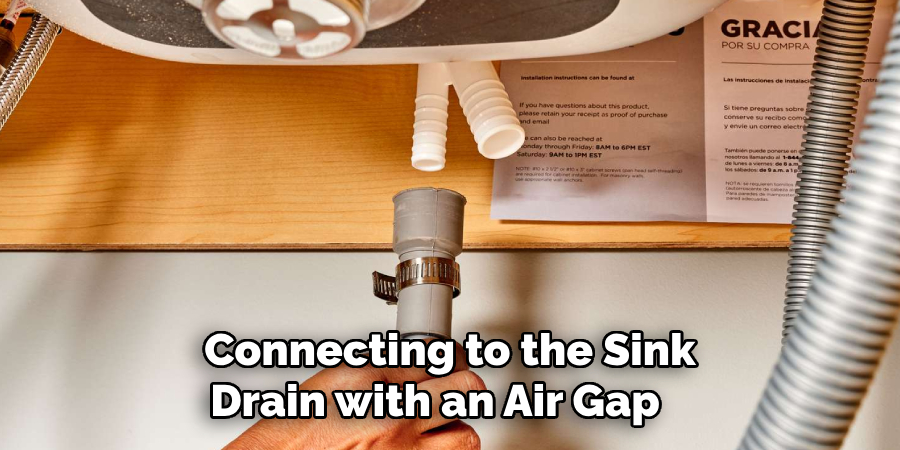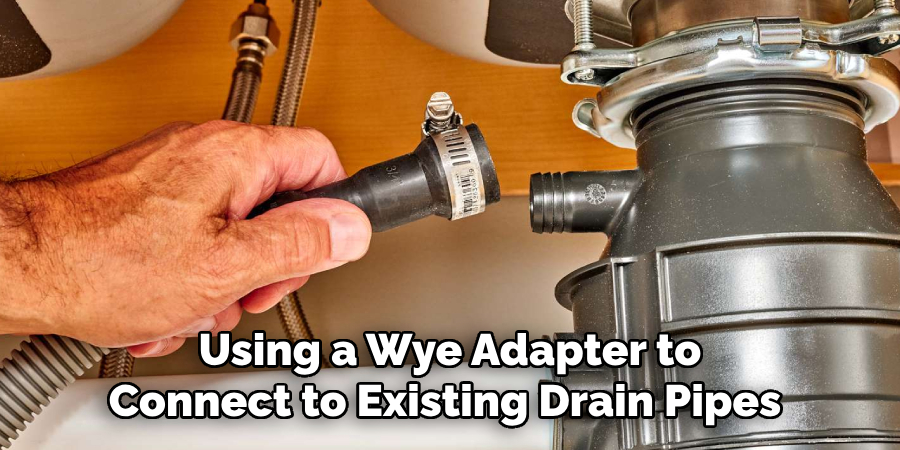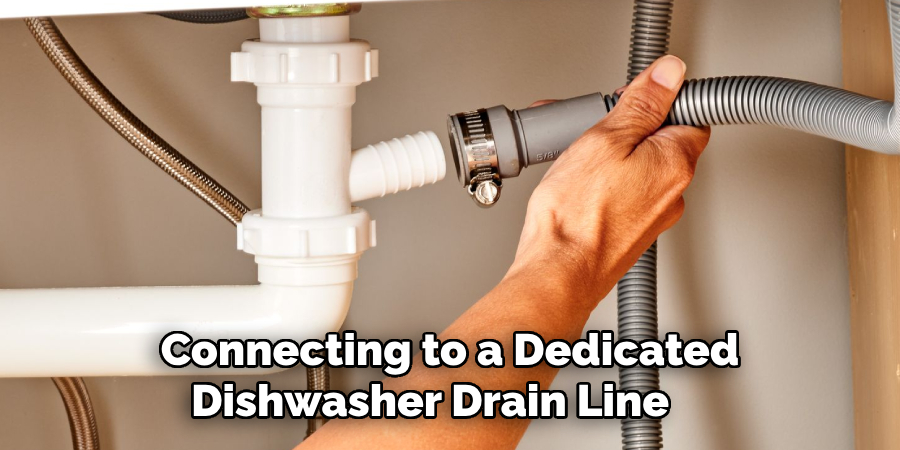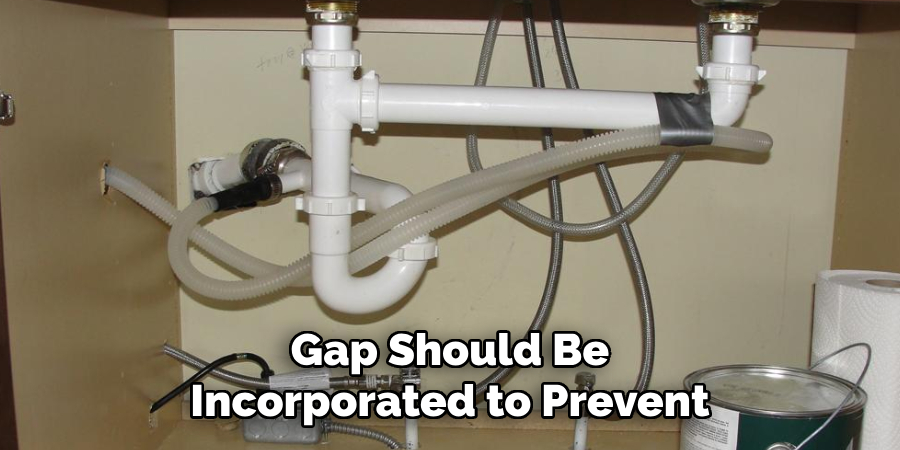Connecting a dishwasher to a drain is an essential part of the installation process to ensure proper functionality and prevent water damage. This guide will provide clear and straightforward steps of how to connect dishwasher to drain. Whether you’re installing a new appliance or replacing an old one, understanding the correct connection methods will ensure efficient drainage and long-term performance.

Why Proper Drainage is Essential
Proper drainage is vital for the efficient operation of your dishwasher and the prevention of potential issues. Without a reliable drainage system, dirty water can backflow into the appliance, leading to poor cleaning performance and contamination. Additionally, inadequate drainage can result in water pooling, which might cause leaks, damage to surrounding cabinetry, or even mold growth over time. Ensuring a secure and correctly connected drain line not only protects your home from water damage but also extends the lifespan of your dishwasher, keeping it running smoothly for years to come.
Understanding Dishwasher Drainage Systems
Dishwasher drainage systems are designed to effectively remove wastewater generated during the cleaning process. Typically, a dishwasher drain system consists of a drain hose, a connection to the household plumbing (such as a sink drain or garbage disposal), and an air gap or high loop to prevent backflow. The drain hose plays a crucial role in guiding the wastewater out of the dishwasher while preventing dirty water from re-entering the appliance.
Many modern dishwashers incorporate built-in mechanisms like anti-siphon devices to maintain proper drainage, but it’s essential to understand the layout and components of the system to ensure a correct and secure installation. By familiarizing yourself with your dishwasher’s drainage system, you can troubleshoot problems more effectively and ensure optimal performance.
10 Methods How to Connect Dishwasher to Drain
1. Connecting to the Sink Drain with an Air Gap
One of the most common and effective methods for connecting a dishwasher to a drain is by using an air gap. An air gap is a small cylindrical device installed on the countertop or sink, preventing dirty water from backflowing into the dishwasher. To connect using this method, first, install the air gap by drilling a hole in the countertop if one does not already exist. Then, connect a short rubber or plastic hose from the dishwasher’s drain outlet to the small inlet of the air gap.

From the larger outlet of the air gap, attach a second hose that runs downward to the sink drain, typically connecting to a branch fitting before the P-trap. Secure all connections with hose clamps to prevent leaks. This method is highly recommended because it meets plumbing codes in many areas and provides excellent protection against contamination of the dishwasher.
2. Direct Connection to the Garbage Disposal
For homeowners with a garbage disposal installed, connecting the dishwasher drain directly to it is a practical option. Most garbage disposals come with a designated dishwasher inlet. To use this method, start by removing the knockout plug inside the dishwasher inlet port of the disposal using a screwdriver and hammer.
Next, attach the dishwasher drain hose to this inlet and secure it with a hose clamp. Ensure the hose forms a high loop under the sink before reaching the disposal to prevent wastewater from flowing back into the dishwasher. This method is convenient and efficient, as food particles washed from dishes can be ground up by the disposal before entering the drain system.
3. High Loop Method Without an Air Gap
In situations where an air gap is not required by local plumbing codes, the high loop method provides an alternative way to prevent backflow. To implement this, simply route the dishwasher drain hose upward, creating a loop that is secured as high as possible under the sink cabinet before connecting it to the sink drain or garbage disposal.
The loop helps prevent wastewater from flowing back into the dishwasher by relying on gravity. Use a zip tie or bracket to secure the loop firmly in place. While this method is simpler and less intrusive than installing an air gap, it is slightly less effective in preventing contamination.
4. Installing a Standpipe for the Dishwasher Drain
If a sink or garbage disposal connection is not available, another method involves draining the dishwasher into a standpipe. A standpipe is a vertical pipe that drains directly into the home’s plumbing system. To install this setup, position a standpipe with a P-trap underneath it, ensuring it meets local plumbing codes.
The dishwasher drain hose should be inserted into the standpipe and secured at the proper height (typically 18–24 inches above the floor). This setup is commonly used in laundry rooms for washing machines and can be adapted for dishwashers in non-traditional kitchen layouts.
5. Using a Wye Adapter to Connect to Existing Drain Pipes
For kitchens with limited plumbing connection points, a wye (Y-shaped) adapter can be installed to split an existing drain line and accommodate the dishwasher hose. This method requires cutting into the sink’s drain pipe and installing a wye fitting, which allows both the sink and dishwasher to share the same drainage system.

Ensure the dishwasher hose is attached to the angled portion of the wye adapter and secured with a clamp. Adding a high loop before the connection further prevents backflow. This method works well when modifying existing plumbing without altering the garbage disposal or installing an air gap.
6. Using a Dishwasher Drain Pump for Long Drain Runs
In situations where the dishwasher is far from the main sink drain, a drain pump can be used to assist in proper water drainage. Some dishwashers come with built-in drain pumps, while others may require an external pump installation. The pump forces wastewater through a longer drain hose, allowing the dishwasher to be placed in a remote location, such as an island kitchen or a secondary sink. To connect this system, run the drain hose from the dishwasher to the pump inlet, then connect the pump outlet to the sink drain, garbage disposal, or standpipe. Ensure the pump is properly powered and secured to prevent vibrations.
7. Connecting to a Dedicated Dishwasher Drain Line
For homes with dedicated dishwasher drain lines, connecting the dishwasher is straightforward. These dedicated lines typically terminate under the sink or in the basement, leading directly into the home’s plumbing system. To use this connection, attach the dishwasher drain hose to the designated pipe using a hose clamp, ensuring it follows either the high loop method or air gap installation for added protection. This setup is ideal for newly built homes or kitchen remodels, as it provides a clean and efficient way to route wastewater without interfering with sink plumbing.

8. Installing a Dual Drain Connection for Two Dishwashers
For large households or kitchens with two dishwashers, a dual drain connection is necessary. This setup involves using a T-connector or Y-connector to merge two dishwasher drain hoses into a single drain outlet. To install, attach each dishwasher’s drain hose to the respective inlet of the connector, then secure the main outlet hose to the sink drain or garbage disposal.
Ensure that both hoses have individual high loops or connect through an air gap to prevent cross-contamination between the two dishwashers. This method is useful in high-capacity kitchens where multiple dishwashers are used simultaneously.
9. Using a Check Valve to Prevent Backflow
To further prevent backflow and potential contamination, some homeowners opt to install a check valve in the dishwasher drain line. A check valve is a one-way valve that allows wastewater to flow out while preventing it from coming back in. To install, cut the dishwasher drain hose and insert the check valve, ensuring the arrow on the valve points in the direction of drainage. Secure both ends with hose clamps, and connect the hose to the drain point as needed. This method adds an extra layer of protection against dirty water re-entering the dishwasher.
10. Routing the Dishwasher Drain to a Basement or Utility Sink
In unique kitchen layouts where direct under-sink connections are not feasible, the dishwasher drain can be routed to a basement floor drain or utility sink. This method requires running a long drain hose downward and ensuring proper slope for drainage. A P-trap should be installed in the drain line to prevent sewer gases from entering the home. Additionally, a high loop or air gap should be incorporated to prevent backflow issues. While less common, this method can be a viable option in older homes or unconventional kitchen designs.

Conclusion
Connecting a dishwasher to a drain requires careful planning to ensure proper wastewater disposal and to prevent potential plumbing issues. Whether using an air gap, a high loop, a standpipe, or direct connection to a garbage disposal, selecting the right method depends on your kitchen’s layout, local plumbing codes, and dishwasher placement. By following the appropriate installation techniques, you can ensure that your dishwasher operates efficiently while maintaining a sanitary and leak-free drainage system. So, there you have it – a quick and easy guide on how to connect dishwasher to drain.
Professional Focus
Angela Ervin, a former interior designer turned blogger, specializes in kitchen design and renovations. Through her website, she blends her passion for cooking with design expertise, sharing practical and creative ideas. Known for balancing functionality and beauty, Angela’s insightful content has made her a trusted voice in home design and lifestyle.
About the Author
Angela Ervin, an experienced interior designer and blogger, combines her passion for kitchen renovations with storytelling. Living in Petersburg with her family, she enjoys cooking and testing her projects firsthand. Known for her humor and relatable style, Angela shares creative, functional design insights through her content, making her a trusted voice in home design.
Education History
University: Virginia Commonwealth University
Degree: Bachelor of Fine Arts (BFA) in Interior Design
- Angela’s education at VCU focused on mastering core interior design principles, including spatial planning, color theory, materials selection, and sustainable design practices.
- She gained hands-on experience through studio projects and collaborative design exercises, which honed her ability to create functional and aesthetically pleasing environments.
- Her coursework also emphasized problem-solving and practical applications of design, preparing her for real-world projects like her self-directed kitchen renovations.
- The program’s strong foundation in both technical skills and creative expression shaped Angela’s ability to seamlessly integrate form and function in her work.
